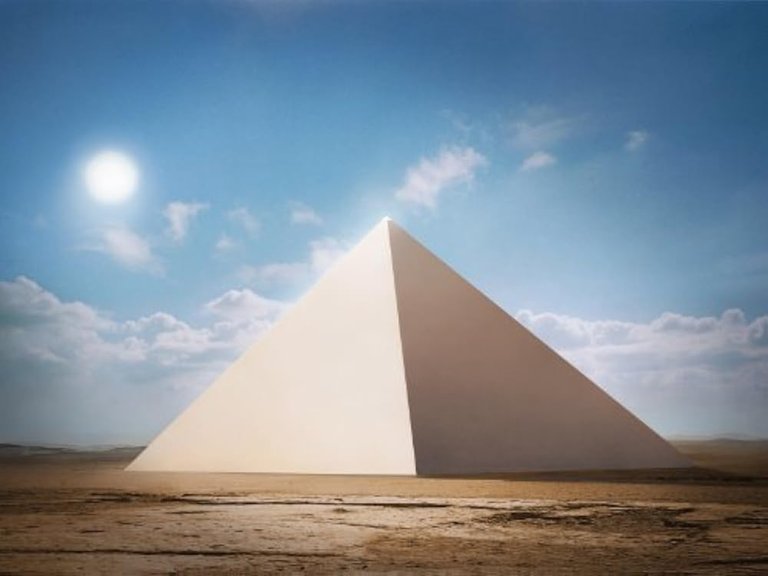
The BBC’s 2002 docudrama Building the Great Pyramid stands as a landmark in historical storytelling, blending documentary rigour with cinematic flair. Emerging in the wake of Walking with Dinosaurs (1999), which revolutionised palaeontological documentaries through CGI, this film applied similar techniques to human history. Directed by Jonathan Stamp and co-produced with the Discovery Channel and Germany’s NDR, it sought to demystify the construction of the Great Pyramid of Giza—a feat of engineering that has captivated scholars for millennia. By merging dramatised reconstructions, narration, and CGI, the documentary offered audiences a vivid portal into ancient Egypt, albeit with stylistic choices that now feel somewhat dated.
Written by Stamp and Steven Manuel, the film adopts a hybrid format: part conventional documentary, part historical drama. Michael Pennington’s narration contextualises archaeological findings, while dramatised sequences follow Nakht (voiced by Omar Sharif), a fictional conscript labourer. This dual narrative structure—switching between Pennington’s objective commentary and Nakht’s personal recollections—avoids contradiction but occasionally risks overwhelming viewers. The plot begins in the 26th century BCE, tracing Nakht’s journey from a rural youth to a senior overseer on Khufu’s pyramid. Through his eyes, the film explores the logistical and technical challenges of quarrying, transporting, and assembling over 2.3 million limestone blocks.
The documentary largely adheres to established historical consensus, sidestepping the speculative excesses later popularised by channels like History Channel. For instance, it dispels the myth of slave labour, instead depicting Nakht and his peers as conscripts—a detail supported by archaeological evidence of worker settlements near Giza. Scenes showing the use of copper tools, wooden sledges, and earthen ramps align with mainstream Egyptological theories. While the fictionalised subplot of Nakht’s life inevitably involves creative licence, it serves to humanise the pyramid’s construction without veering into melodrama.
At the time of release, the CGI sequences—particularly those reconstructing Giza’s bustling construction site—were groundbreaking, earning the film a Primetime Emmy for Outstanding Visual Effects. Today, these effects appear less polished, with textures and animations showing their early-2000s limitations. However, the integration of live-action reconstructions and CGI remains effective in conveying scale, such as the depiction of 4,000 workers hauling 2.5-tonne blocks. The film’s success—bolstered by strong ratings and critical praise—paved the way for similar BBC projects, including Colosseum: Rome’s Arena of Death (2003) and Pompeii: The Last Day (2003), which replicated its hybrid format.
Building the Great Pyramid excels in making academic research accessible. By framing technical details—such as the precision of the pyramid’s 51-degree slope—within Nakht’s narrative, it avoids dry exposition. Sharif’s voice acting lends gravitas to the protagonist, though the decision to separate his voice from the on-screen actor (Abdallah Mahmoud) occasionally disrupts immersion. The omission of then-recent theories, such as internal ramps proposed by Jean-Pierre Houdin, reflects a cautious approach that prioritises consensus over conjecture—a virtue in an era of increasing pseudo-historical programming.
In retrospect, the documentary’s simplicity is both its greatest asset and weakness. While its straightforward storytelling and reliance on proven facts ensure clarity, it lacks the depth of more recent investigations. Nonetheless, Building the Great Pyramid remains a seminal work, demonstrating how multimedia techniques can breathe life into ancient history without sacrificing scholarly integrity. For audiences in 2002, it was a revelation; today, it stands as a testament to the BBC’s pioneering spirit in educational entertainment.
RATING: 6/10 (++)
Blog in Croatian https://draxblog.com
Blog in English https://draxreview.wordpress.com/
InLeo blog https://inleo.io/@drax.leo
Hiveonboard: https://hiveonboard.com?ref=drax
InLeo: https://inleo.io/signup?referral=drax.leo
Rising Star game: https://www.risingstargame.com?referrer=drax
1Inch: https://1inch.exchange/#/r/0x83823d8CCB74F828148258BB4457642124b1328e
BTC donations: 1EWxiMiP6iiG9rger3NuUSd6HByaxQWafG
ETH donations: 0xB305F144323b99e6f8b1d66f5D7DE78B498C32A7
BCH donations: qpvxw0jax79lhmvlgcldkzpqanf03r9cjv8y6gtmk9
Posted Using INLEO